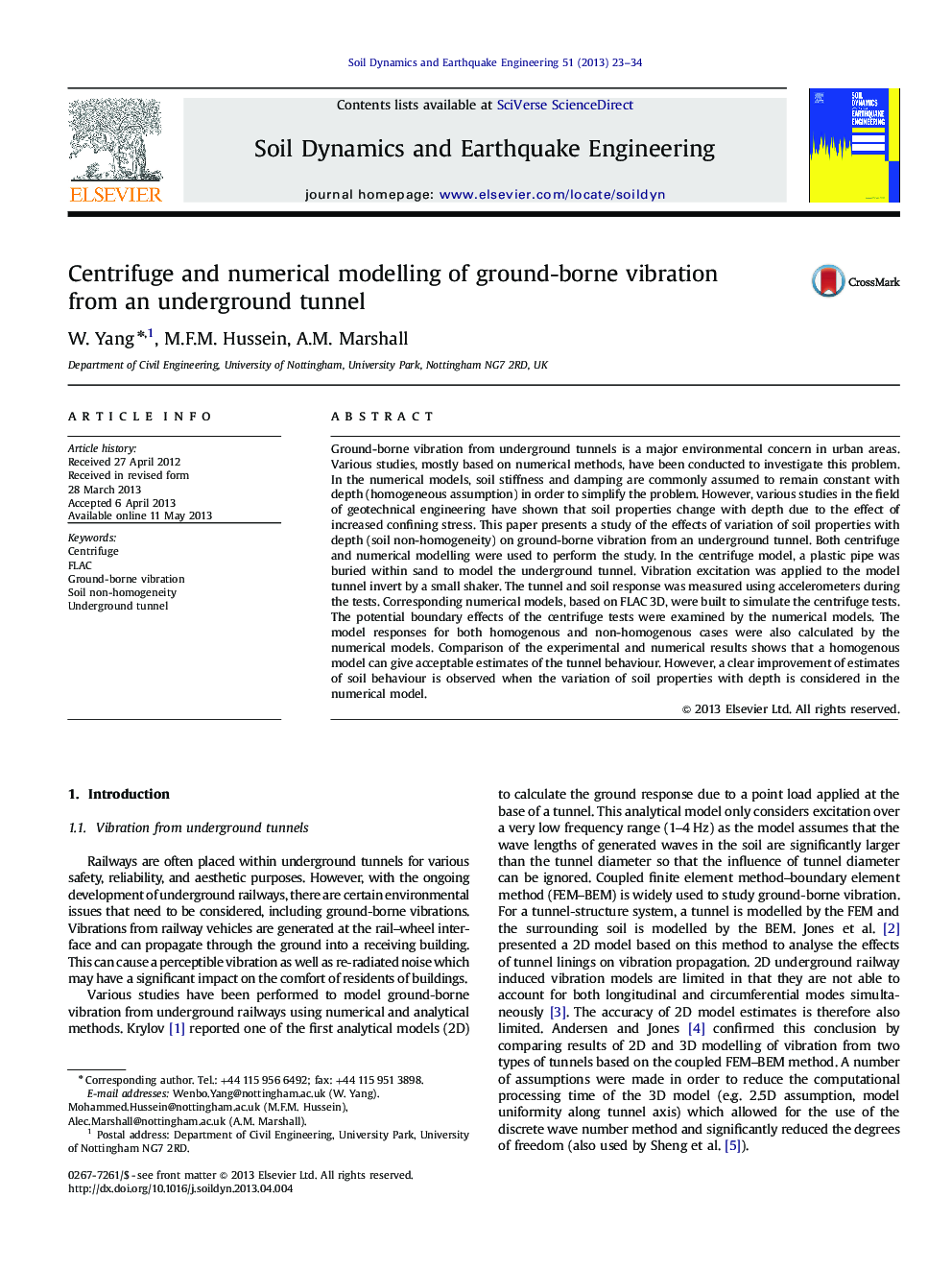| Article ID | Journal | Published Year | Pages | File Type |
|---|---|---|---|---|
| 304227 | Soil Dynamics and Earthquake Engineering | 2013 | 12 Pages |
•Ground-borne vibration from an underground tunnel is modelled.•Both centrifuge and numerical models are developed.•The models account for soil nonhomogeneity due to variation of confined pressure.•The use of homogeneous and non-homogeneous models is examined.•Accounting for non-homogeneity is important to model ground-borne vibration.
Ground-borne vibration from underground tunnels is a major environmental concern in urban areas. Various studies, mostly based on numerical methods, have been conducted to investigate this problem. In the numerical models, soil stiffness and damping are commonly assumed to remain constant with depth (homogeneous assumption) in order to simplify the problem. However, various studies in the field of geotechnical engineering have shown that soil properties change with depth due to the effect of increased confining stress. This paper presents a study of the effects of variation of soil properties with depth (soil non-homogeneity) on ground-borne vibration from an underground tunnel. Both centrifuge and numerical modelling were used to perform the study. In the centrifuge model, a plastic pipe was buried within sand to model the underground tunnel. Vibration excitation was applied to the model tunnel invert by a small shaker. The tunnel and soil response was measured using accelerometers during the tests. Corresponding numerical models, based on FLAC 3D, were built to simulate the centrifuge tests. The potential boundary effects of the centrifuge tests were examined by the numerical models. The model responses for both homogenous and non-homogenous cases were also calculated by the numerical models. Comparison of the experimental and numerical results shows that a homogenous model can give acceptable estimates of the tunnel behaviour. However, a clear improvement of estimates of soil behaviour is observed when the variation of soil properties with depth is considered in the numerical model.
